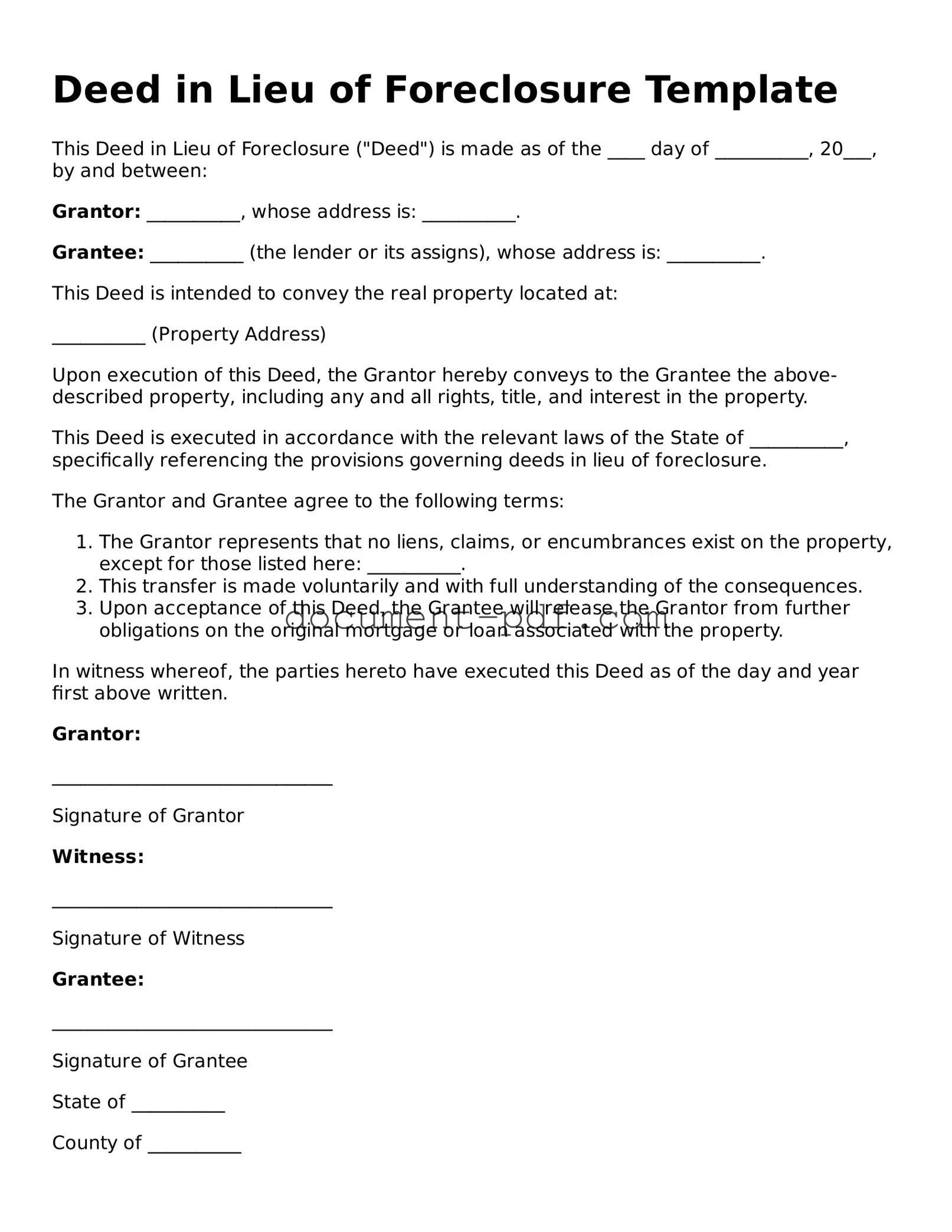Deed in Lieu of Foreclosure Template
This Deed in Lieu of Foreclosure ("Deed") is made as of the ____ day of __________, 20___, by and between:
Grantor: __________, whose address is: __________.
Grantee: __________ (the lender or its assigns), whose address is: __________.
This Deed is intended to convey the real property located at:
__________ (Property Address)
Upon execution of this Deed, the Grantor hereby conveys to the Grantee the above-described property, including any and all rights, title, and interest in the property.
This Deed is executed in accordance with the relevant laws of the State of __________, specifically referencing the provisions governing deeds in lieu of foreclosure.
The Grantor and Grantee agree to the following terms:
- The Grantor represents that no liens, claims, or encumbrances exist on the property, except for those listed here: __________.
- This transfer is made voluntarily and with full understanding of the consequences.
- Upon acceptance of this Deed, the Grantee will release the Grantor from further obligations on the original mortgage or loan associated with the property.
In witness whereof, the parties hereto have executed this Deed as of the day and year first above written.
Grantor:
______________________________
Signature of Grantor
Witness:
______________________________
Signature of Witness
Grantee:
______________________________
Signature of Grantee
State of __________
County of __________
On this ____ day of __________, 20___, before me, a notary public, personally appeared __________ (the Grantor) and __________ (the Grantee), known to me to be the persons whose names are subscribed to the within instrument, and acknowledged that they executed the same for the purposes therein contained.
Witness my hand and official seal:
______________________________
Notary Public
My commission expires: __________
